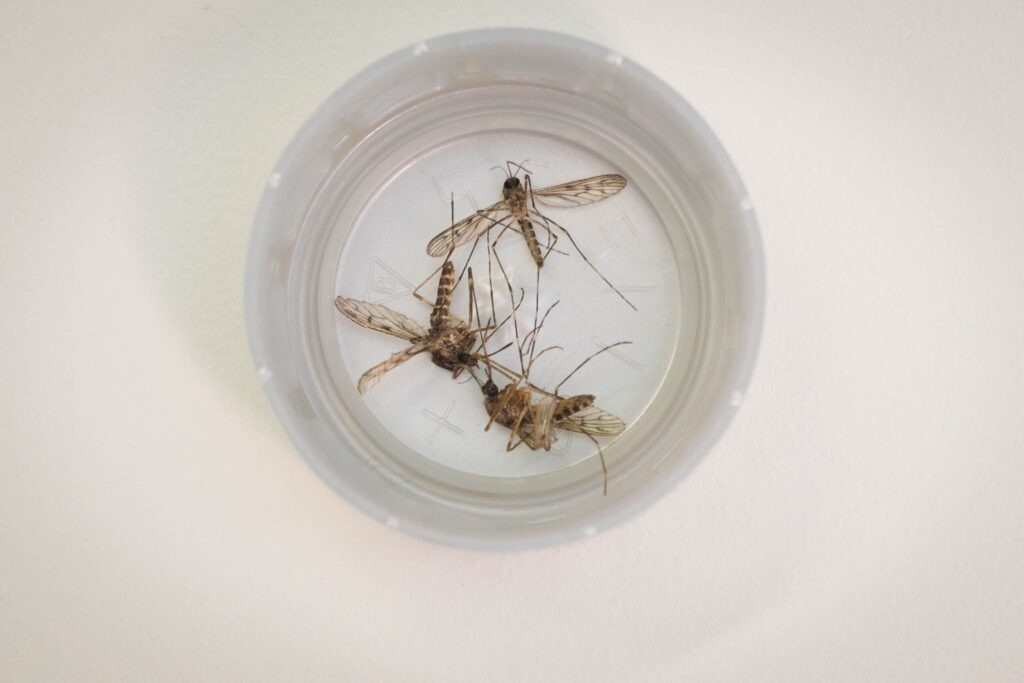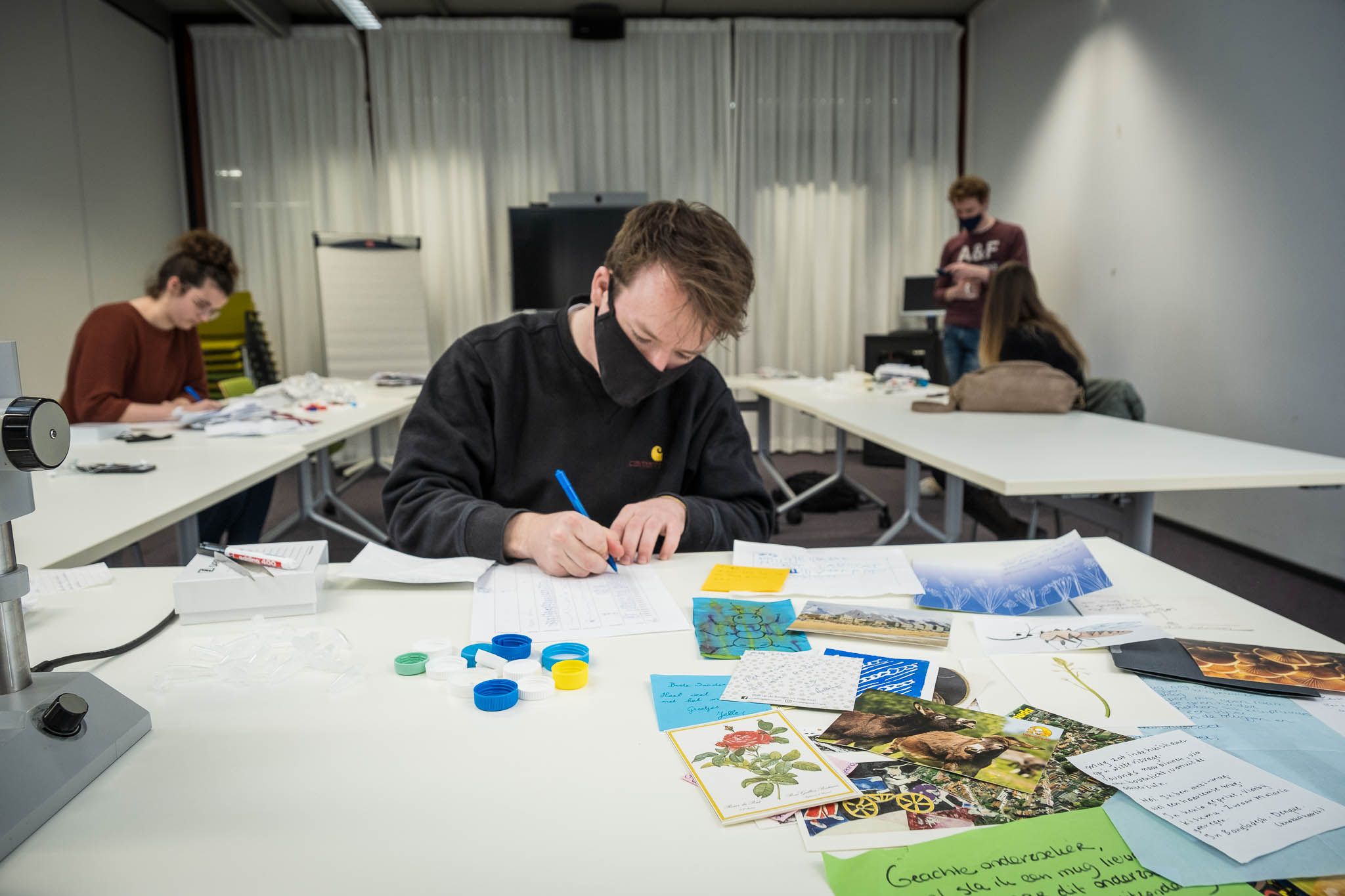In February, WUR researchers called on the Dutch to ‘whack a mosquito and mail it’ to help them study dead mosquitos. And they did. The Entomology Mosquito radar-project received between 5000 and 6000 envelopes containing dead mosquitos, says PhD candidate Rody Blom. His job is to open the envelopes, with the help of colleagues who have few hours to spare on Mondays and Fridays. Some 3500 envelopes have been processed so far.
Today Blom is seated at a large table full of envelopes with master’s student Jet Griep and postdoc Emily Pascoe. First, they check whether the envelope contains a mosquito – people send all sorts of insects. They distinguish between the Culex, the Culiseta and the Anopheles. The latter are also known as malaria mosquitos because they belong to the genus responsible for transmitting malaria in large parts of the world (not including the Netherlands).
Postal code
Because all contributors completed a form with their information, Blom can identify the origin of the mosquito based on the postal code. This enables him to discover whether more mosquitos survive the winters along the coast or inland.

Blood meal
the DNA found in the blood, they hope to discover what animals the mosquito has recently bitten. Ultimately, the mosquitos will be transferred to the Erasmus University in Rotterdam, where researchers will determine whether they contain pathogenic viruses. The West Nile virus, for example, which causes fever and influenza in humans and horses, or the Usutu virus, causing death songbirds. ‘We aim to better understand how viruses propagate through mosquito populations’, says Blom.
He has some two thousand envelopes to go. Many contributors have added greeting cards and children’s drawings. First, all the envelopes are processed, followed by the postal code, blood and virus study. This is to culminate in a scientific publication. Almost all of the contributors have sent the mosquitos in an empty bottle cap as per the instruction. The caps are gathered to be sent to ‘drop je dopje‘ (drop you cap) for seeing-eye dogs.

 Photo: Guy Ackermans
Photo: Guy Ackermans